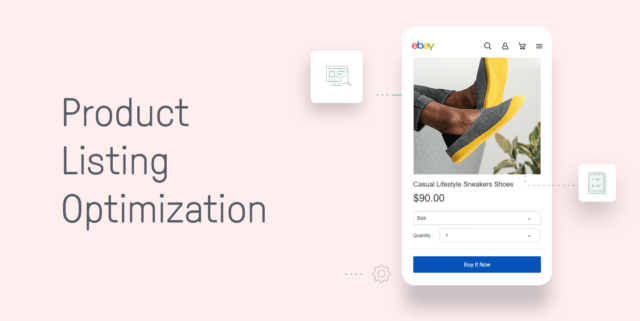In the competitive world of e-commerce, having great products is just the beginning. To stand out and attract customers, optimizing your product listings for search engines is crucial. Effective optimization can significantly improve your visibility, drive traffic to your store, and ultimately increase sales. Here’s a guide on how to optimize your product listings for better search results.

Table of Contents
Toggle1. Conduct Keyword Research
The foundation of any effective SEO strategy is keyword research. Identifying the right keywords allows you to understand what potential customers are searching for. Here are some tips for effective keyword research:
- Use Keyword Tools: Utilize tools like Google Keyword Planner, SEMrush, or Ahrefs to find relevant keywords for your products. Look for terms with a high search volume and low competition.
- Analyze Competitors: Check the keywords your competitors are using in their product listings. This can provide insights into effective strategies.
- Long-Tail Keywords: Incorporate long-tail keywords, which are longer phrases that target specific search intents. For example, instead of just “running shoes,” use “best lightweight running shoes for women.”
2. Optimize Product Titles
Your product title is one of the first things customers see, and it plays a significant role in search rankings. Here are some best practices for crafting optimized product titles:
- Include Primary Keywords: Make sure to include your main keyword at the beginning of the title for better visibility.
- Be Descriptive: Clearly describe the product, including key features like brand, color, size, and type.
- Keep It Concise: Aim for a title length of 50-70 characters to ensure it displays properly in search results.
Example:
Poor Title: “Shoes” Optimized Title: “Men’s Lightweight Running Shoes – Breathable Mesh, Size 10”
3. Write Compelling Product Descriptions
A well-crafted product description not only helps with SEO but also persuades customers to make a purchase. Here’s how to create engaging descriptions:
- Focus on Benefits: Highlight how the product solves a problem or improves the customer’s life. Use bullet points for easy readability.
- Incorporate Keywords Naturally: Include relevant keywords throughout the description without keyword stuffing. Aim for a natural flow.
- Use Formatting Wisely: Break up text with headings, bullet points, and short paragraphs to enhance readability.
4. Utilize High-Quality Images
Images are a vital part of product listings, influencing both search results and customer decisions. Here are tips for optimizing product images:
- Use Clear, High-Resolution Images: Ensure your images are high-quality and show the product from different angles. This builds trust and enhances the shopping experience.
- Optimize Alt Text: Use descriptive alt text for each image, including relevant keywords. This helps with SEO and makes your site more accessible.
- Image File Names: Rename your image files to include keywords before uploading. For example, instead of “IMG1234.jpg,” use “mens-lightweight-running-shoes.jpg.”
5. Implement Structured Data Markup
Structured data markup helps search engines understand the content of your product listings better. This can improve how your products appear in search results. Use Schema.org markup for e-commerce products, which includes:
- Product Name
- Description
- Image
- Price
- Availability
Implementing structured data can lead to rich snippets in search results, such as star ratings or price, making your listings more attractive.
6. Encourage Customer Reviews
Customer reviews not only build trust but also contribute to better SEO. Here’s how to encourage reviews:
- Follow Up After Purchase: Send automated emails after a purchase, inviting customers to leave a review.
- Incentivize Reviews: Consider offering discounts or loyalty points for customers who review their purchases.
- Display Reviews Prominently: Showcase reviews on your product pages to enhance credibility and encourage others to buy.
7. Optimize for Mobile
With the increasing use of mobile devices for online shopping, ensuring your product listings are mobile-friendly is crucial:
- Responsive Design: Use a responsive design that adjusts seamlessly to different screen sizes.
- Fast Loading Times: Optimize images and minimize code to improve loading speeds on mobile devices.
- Easy Navigation: Ensure your site is easy to navigate on mobile, allowing users to find products quickly.
8. Monitor Performance and Adjust
SEO is an ongoing process. Regularly monitor your product listings’ performance using tools like Google Analytics and Search Console. Pay attention to:
- Traffic Sources: Identify where your traffic is coming from and which products are performing best.
- Keyword Rankings: Track your keyword rankings and adjust your strategy as needed.
- Customer Feedback: Listen to customer feedback and make adjustments to improve product descriptions and images.
Conclusion
Optimizing your product listings for better search results is essential in the e-commerce landscape. By conducting thorough keyword research, crafting compelling titles and descriptions, and focusing on high-quality images and customer reviews, you can significantly enhance your visibility and sales. Remember, SEO is an ongoing effort—regularly update and refine your listings to stay ahead of the competition. With these strategies in place, your products will be well on their way to reaching the top of search results. Happy selling!


No responses yet